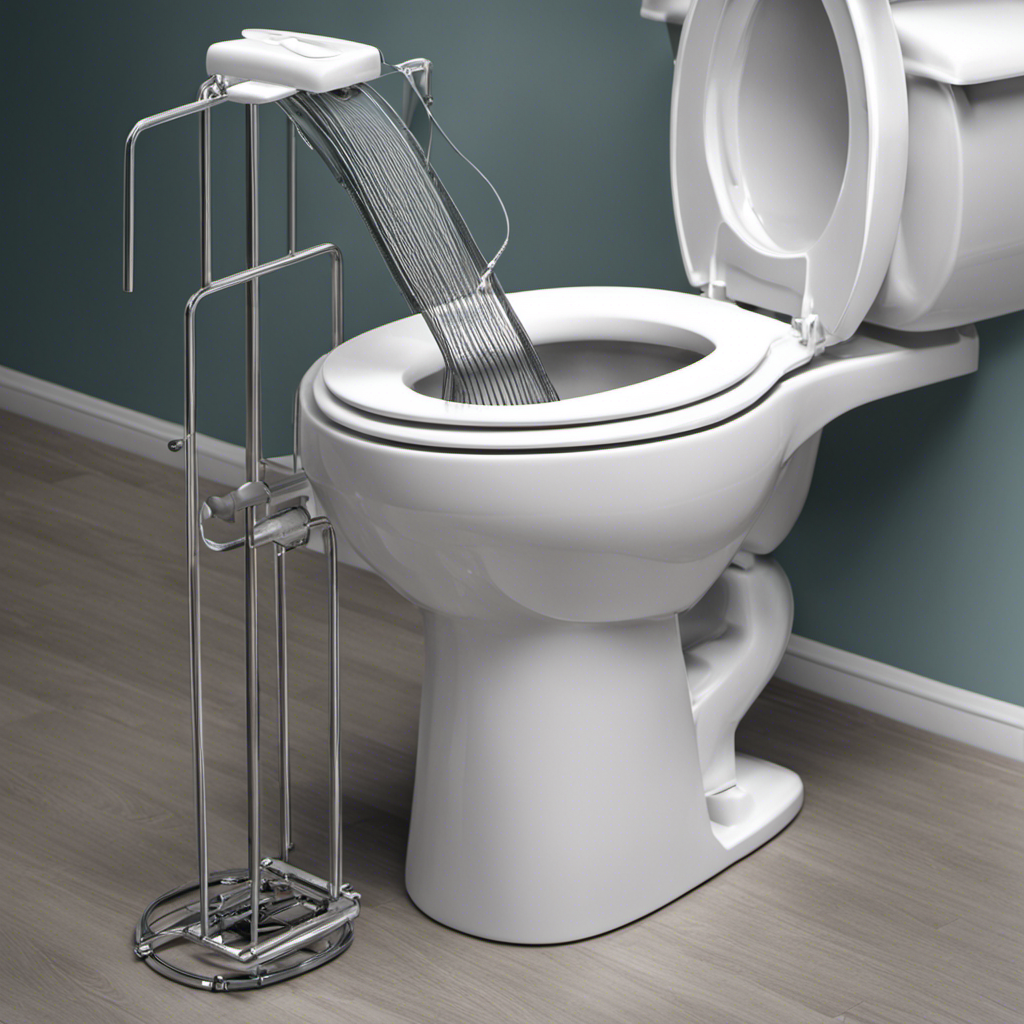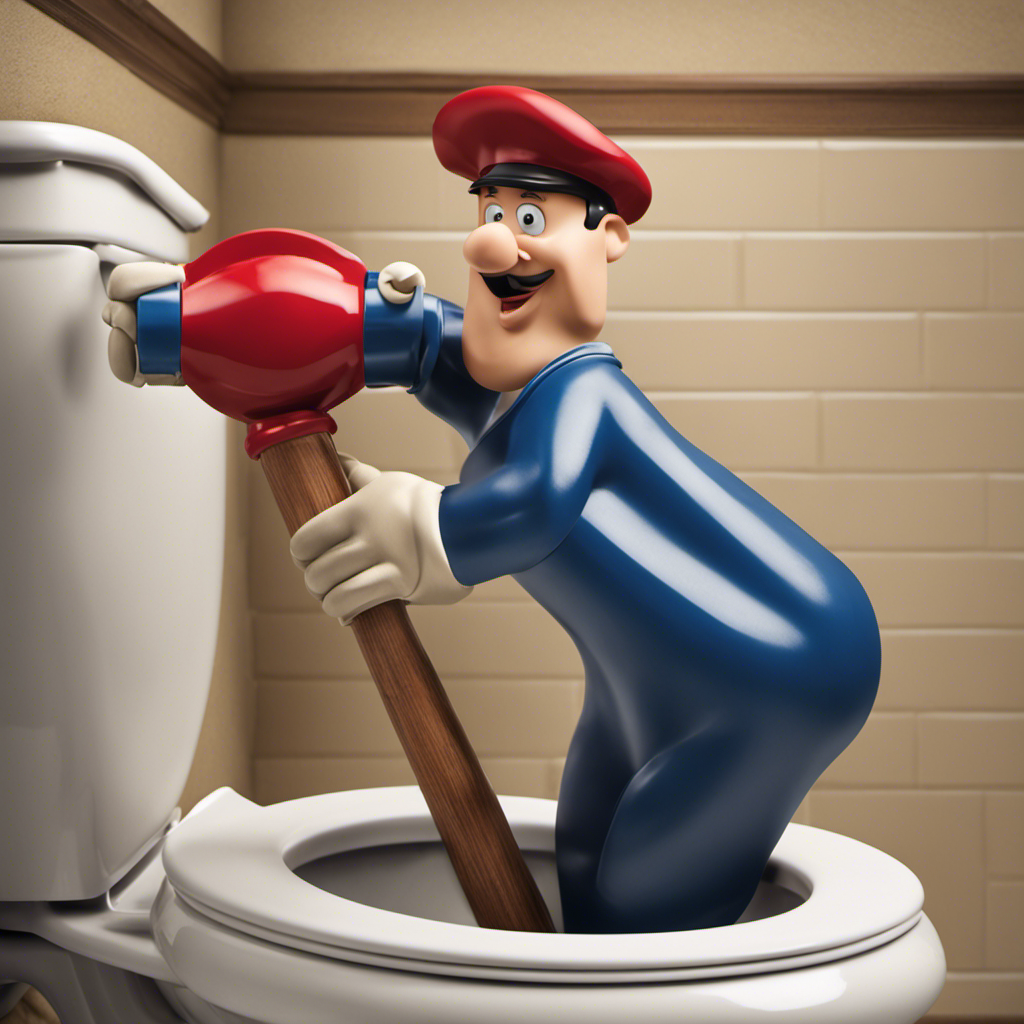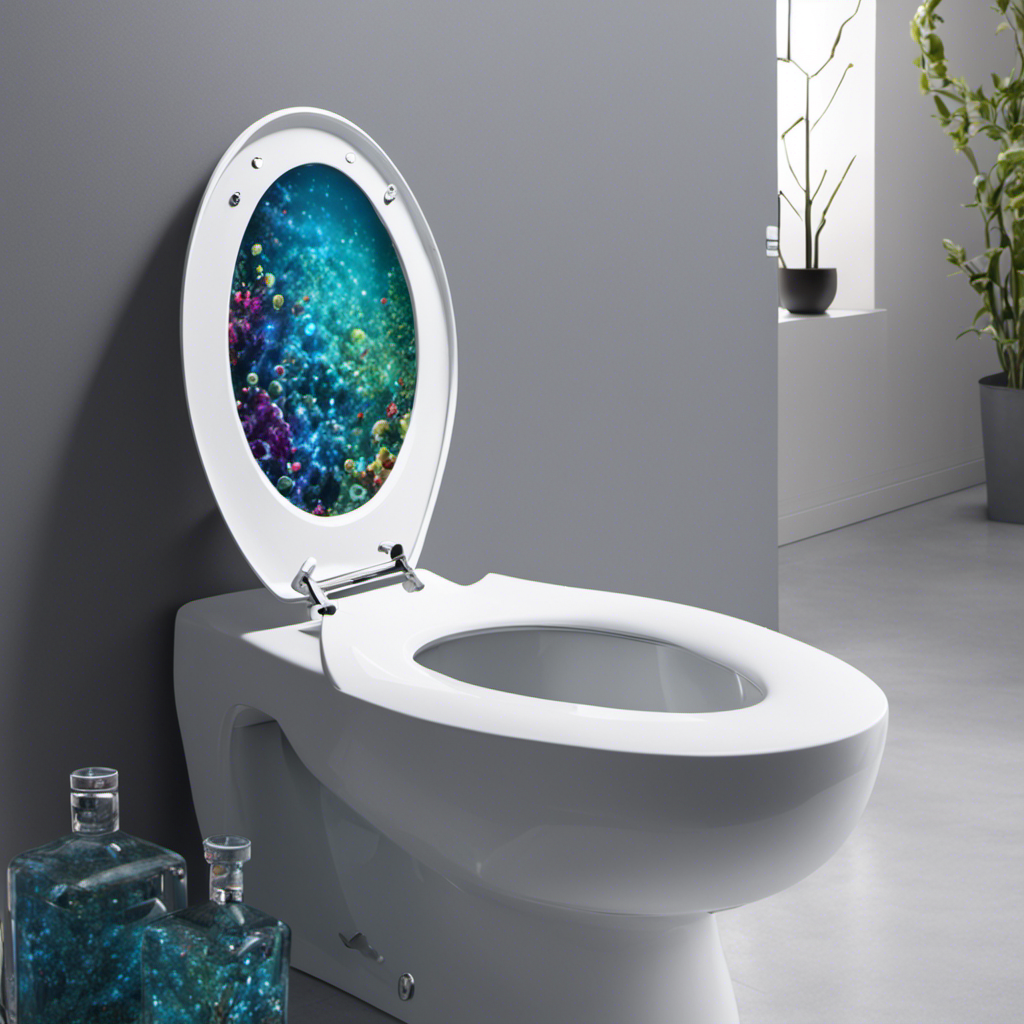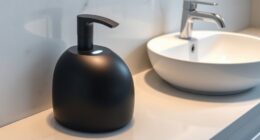As I stood in my bathroom, faced with a clogged toilet and no plunger in sight, panic set in.
But then, a burst of inspiration hit me – there had to be another way.
And so, armed with common household items and a determined spirit, I embarked on a mission to unclog my toilet without a plunger.
In this article, I will guide you step-by-step through the process, sharing natural remedies, effective techniques, and preventive measures to ensure you never find yourself in a messy situation again.
Key Takeaways
- A wire hanger can be used as an alternative tool to a plunger for unclogging toilets.
- Hot water and dish soap can be used as a method to unclog toilets.
- Natural remedies like baking soda and vinegar or dish soap and hot water can help clear toilet blockages.
- Effective techniques for unclogging toilets include using a plumbing snake, pouring boiling water, adding dish soap, creating a chemical reaction with baking soda and vinegar, or using a wet/dry vacuum.
Common Household Items for Unclogging Toilets
You can use a wire hanger to unclog your toilet without a plunger. When faced with a clogged toilet, it can be frustrating not to have a plunger on hand. However, there are alternative methods for toilet blockages that can save the day.
One of these toilet unclogging hacks involves using a simple wire hanger. Start by unraveling the hanger and straightening it as much as possible. Then, bend one end into a small hook shape. Carefully insert the hooked end into the toilet drain and gently maneuver it around to dislodge the blockage. Be cautious not to scratch the porcelain.
Once you feel the obstruction moving, flush the toilet to clear it completely. This method can be a quick and effective solution for minor toilet clogs.
Step-by-Step Method for Toilet Unclogging
To start, first gather the necessary materials for this step-by-step method.
When faced with a stubborn toilet clog and lacking a plunger, there are alternative methods you can try.
One option is to use a combination of hot water and dish soap. Start by pouring a generous amount of dish soap into the toilet bowl, followed by a pot of hot water (not boiling). Allow the mixture to sit for a few minutes, and then flush the toilet.
Another method involves using a wire hanger. Straighten out the hanger and create a small hook at one end. Insert the hooked end into the toilet drain and gently push and pull to dislodge the clog.
If these methods don’t work, you may need to resort to more advanced troubleshooting tips for stubborn toilet clogs.
Natural Remedies to Clear Toilet Blockages
If you’re looking for alternative methods to clear a toilet blockage, consider using natural remedies. These toilet unclogging hacks are easy to do and can save you from the hassle of calling a plumber or using harsh chemicals.
One effective DIY toilet blockage solution is using a mixture of baking soda and vinegar. Simply pour half a cup of baking soda into the toilet bowl, followed by one cup of vinegar. Let it sit for about 30 minutes, then flush with hot water.
Another option is using a combination of dish soap and hot water. Squirt a generous amount of dish soap into the bowl, followed by hot water. Let it sit for a few minutes before flushing.
These natural remedies can help break down the clog and clear your toilet blockage. Now, let’s move on to the next section to learn more about effective techniques for unclogging toilets.
Effective Techniques for Unclogging Toilets
One effective technique for clearing a toilet blockage is using a plumbing snake. This handy tool is designed to reach deep into the pipes and dislodge any clogs.
Here are some other alternatives to plunging a toilet that you can try before calling professional plumbing services:
-
Boiling water: Pouring a pot of boiling water into the toilet bowl can help break up the blockage and clear the pipes.
-
Dish soap and hot water: Adding dish soap to hot water and pouring it into the toilet can help lubricate the pipes and loosen the clog.
-
Baking soda and vinegar: Mixing baking soda and vinegar and pouring it into the toilet can create a chemical reaction that can break down the blockage.
-
Wet/dry vacuum: Using a wet/dry vacuum can help suck out the clog from the toilet drain.
-
Wire hanger: Straightening out a wire hanger and using it to manually break up the clog can be effective.
Preventive Measures to Avoid Toilet Clogs
Using a wet/dry vacuum can be a helpful tool for clearing a toilet blockage. However, it’s important to remember that prevention is the best way to avoid a clogged toilet in the first place. Here are some toilet maintenance tips to keep in mind:
-
Regularly check for signs of a potential toilet clog. These may include slow drainage, gurgling sounds, or water rising to the rim when flushing.
-
Avoid flushing anything other than toilet paper and human waste. Items like paper towels, wipes, and feminine hygiene products can easily cause a blockage.
-
Use a toilet brush to clean the inside of the bowl regularly. This will help remove any build-up and prevent clogs.
-
Consider installing a drain screen or strainer to catch hair and other debris before it enters the toilet drain.
Frequently Asked Questions
Can I Use Dish Soap Instead of Baking Soda and Vinegar to Unclog a Toilet?
Yes, you can use dish soap as an alternative to baking soda and vinegar to unclog a toilet. It can help break down the blockage and lubricate the pipes, making it easier for the clog to pass through.
Is It Safe to Use a Wire Coat Hanger to Unclog a Toilet?
Using a wire coat hanger to unclog a toilet can be effective, but it’s not the safest method. There are alternative ways to unclog a toilet without a plunger, such as using hot water and dish soap.
Can I Use Hot Water Instead of Boiling Water to Clear a Toilet Blockage?
Yes, using hot water instead of boiling water can still be effective in clearing a toilet blockage. Additionally, vinegar and baking soda can also help unclog toilets by creating a fizzing reaction.
Will Using a Plunger Damage the Toilet Bowl?
Using a plunger to unclog a toilet can be effective, but it may cause damage to the toilet bowl. There are plunger alternatives available, each with their own pros and cons.
How Often Should I Clean My Toilet to Prevent Clogs?
To prevent toilet clogs, it’s important to practice good toilet maintenance. Regularly cleaning the toilet and using a toilet brush can help to keep the pipes clear and prevent blockages.
Conclusion
Well, would you look at that! Who would have thought that unclogging a toilet could be so easy and hassle-free? By using common household items like a wire coat hanger or dish soap, you can save yourself from the dreaded plunger.
Just follow the step-by-step method we discussed and voila! Your toilet will be unclogged in no time. And don’t forget those natural remedies and effective techniques we shared, they can be real lifesavers!
Remember, taking preventive measures is key to avoiding future toilet clogs. Happy unclogging, folks!










